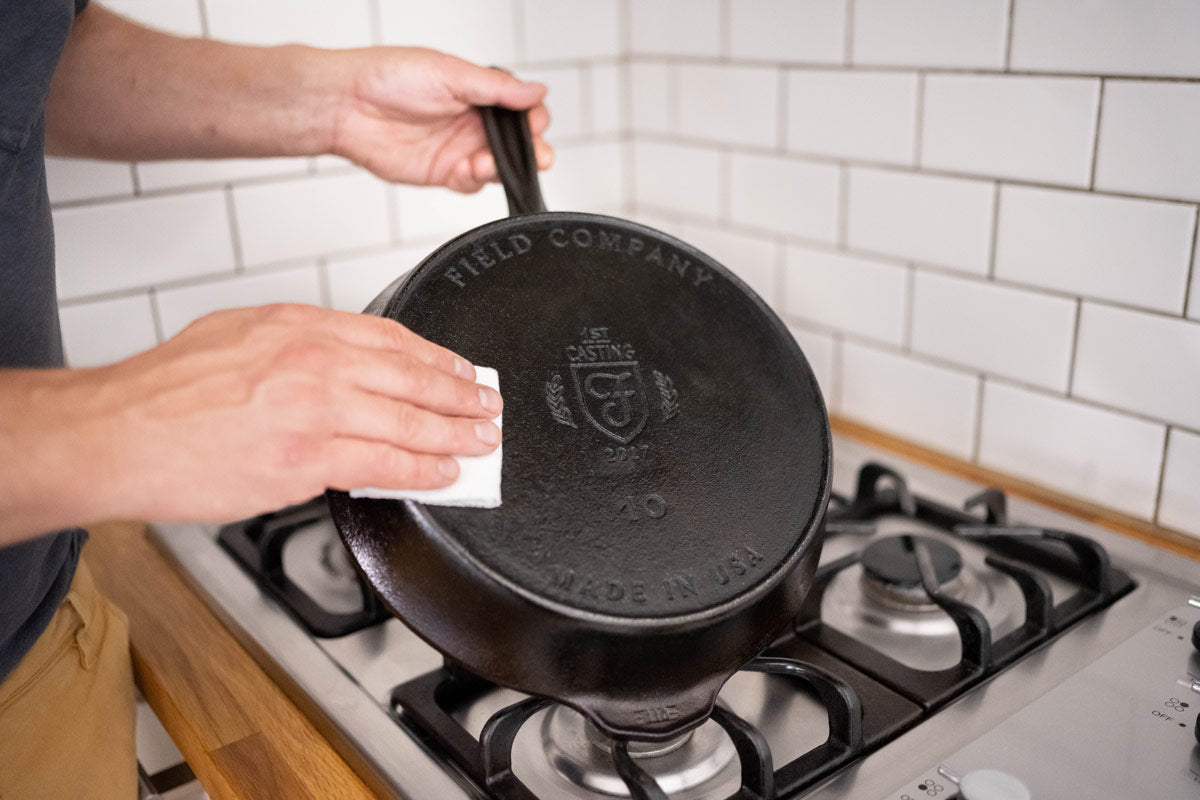We’ve long advocated for grapeseed oil — it’s what we use to pre-season every Field Skillet — and our Seasoning Oil is made with organic, cold-pressed grapeseed oil that you aren’t likely to find on the shelves: most supermarket grapeseed oils aren’t organic, and some less-expensive varieties are produced with undesirable chemical refining processes.
Sunflower oil is also high in polyunsaturated fats, and has similar cooking properties to grapeseed oil. Again, ours is a bit different than the brands at the supermarket: we use organic linoleic sunflower oil, a variety whose chemical composition — specifically, the positioning of double carbon-carbon bonds — is particularly suited to polymerization. Most store brands are high oleic sunflower oil: still great for high-heat cooking, but less effective for cast iron seasoning.
To land on our final blend, we tested these oils in a variety of proportions and optimized for seasoning performance, first and foremost, as well as neutral scent, texture, and ease of application. Use Field Seasoning Oil after every meal, and watch your skillet’s condition improve.


